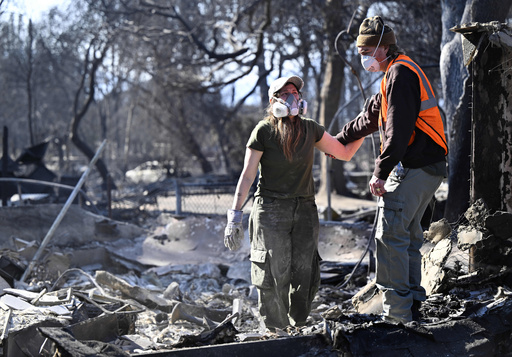
SACRAMENTO, Calif. — In response to the devastating wildfires in January that annihilated thousands of homes in Los Angeles, California Governor Gavin Newsom announced plans to expedite regulations mandating homeowners in high-risk areas to remove flammable materials from their property.
Though his office has not detailed a specific timeline for the execution of this executive order, it follows legislation enacted in 2020 that was supposed to be implemented by January 1, 2023. Governor Newsom is anticipated to finalize the order after his visit to Washington, where he will advocate for disaster relief.
The proposed regulation specifies that homeowners must clear away debris, including dead plants and wooden furnishings, within a five-foot radius of their homes in fire-prone locations. As wildfires ravaged neighborhoods in Los Angeles this past January, the necessary regulations had not yet been drafted, and the state Board of Forestry and Fire Protection recently shared that there isn’t a definitive timeline for their completion.
During a November meeting, officials indicated that a draft of the regulations might not be reviewed until late this year. However, the state has been proactively urging residents to maintain cleanliness around their properties to reduce fire hazards, as outlined on its website.
Frustrations were voiced by lawmakers who initially sponsored the legislation due to these delays. Experts suggest that stricter adherence to the regulations could have potentially mitigated some damage during the Palisades Fire, which is recognized as the most destructive fire in Los Angeles’ history.
Areas heavily impacted by the Palisades Fire fall under state mandates requiring homeowners to keep their immediate surroundings clear of flammable substances, placing them directly under the regulations that are meant to be enforced due to their classification as high-fire-risk regions by the California Department of Forestry and Fire Protection.
This destructive fire, fueled by strong hurricane-like winds that carried embers over significant distances, resulted in the destruction of at least 5,000 structures in regions such as Pacific Palisades, Malibu, and Topanga Canyon.
With the latest proposal, homeowners will have a three-year period to align with the new regulations, leaving some question as to how many properties would have been salvaged under these conditions. Nonetheless, experts agree that clearing brush from around homes could have made a significant difference.
According to Wade Crowfoot, the Secretary of the California Natural Resources, “These measures will encourage proactive measures to protect the most at-risk homes and remove combustible materials within five feet to decrease the chance of a fire igniting due to airborne embers.” His agency oversees the board tasked with creating these new regulations.
The executive order will instruct CalFire to include approximately 1.4 million acres, or nearly 2,200 square miles, of land into the map of fire-prone regions, extending the fire mitigation rules to homeowners in these newly identified areas. Some towns and residents are already proactively practicing these measures voluntarily.
Acknowledging the need for a robust approach to increasingly unpredictable weather patterns, Newsom highlighted that these initiatives form a larger strategy to enhance wildfire and forest resilience. This approach encompasses improved forest management, substantial investments in firefighting resources and personnel, community fortification efforts, and the adoption of cutting-edge response technologies.
Recently, Newsom has suggested investing $25 million in ensuring compliance with the new regulations and other defensible space requirements for homeowners.
Notably, many of the communities affected by the Eaton fire, including parts of Pasadena and Altadena, are not included on the state’s fire-prone map, meaning these new rules will not apply to them.
Roy Wright, the CEO of the Insurance Institute for Business and Home Safety, voiced optimism regarding the announcement and the commitment from the governor’s administration to progress after a protracted delay. He emphasized the clear priority displayed by the governor in advancing this essential legislation.
California has long maintained some of the strictest defensible-space laws in the Western United States, obligating homeowners in fire-critical areas to keep the land around their properties free from hazardous landscaping and materials.
These regulations were first introduced in the 1960s, requiring clearance of flammable materials within a 30-foot radius, and later broadened in 2006 to extend up to 100 feet around structures.
The latest measure establishes a new “ember-resistant” zone, referred to as “zone zero,” prohibiting brush, wooden fences, furniture, sheds, and mulch from being placed within five feet of homes. This zone aims to eliminate any materials that could ignite from embers dispersed by wind. According to officials and researchers, embers account for 90% of structures lost to wildfires.
The zone-zero law received bipartisan support following California’s catastrophic fires in 2017 and 2018, including the tragic blaze that obliterated the town of Paradise, where over 17,000 structures were lost, resulting in 85 fatalities.

